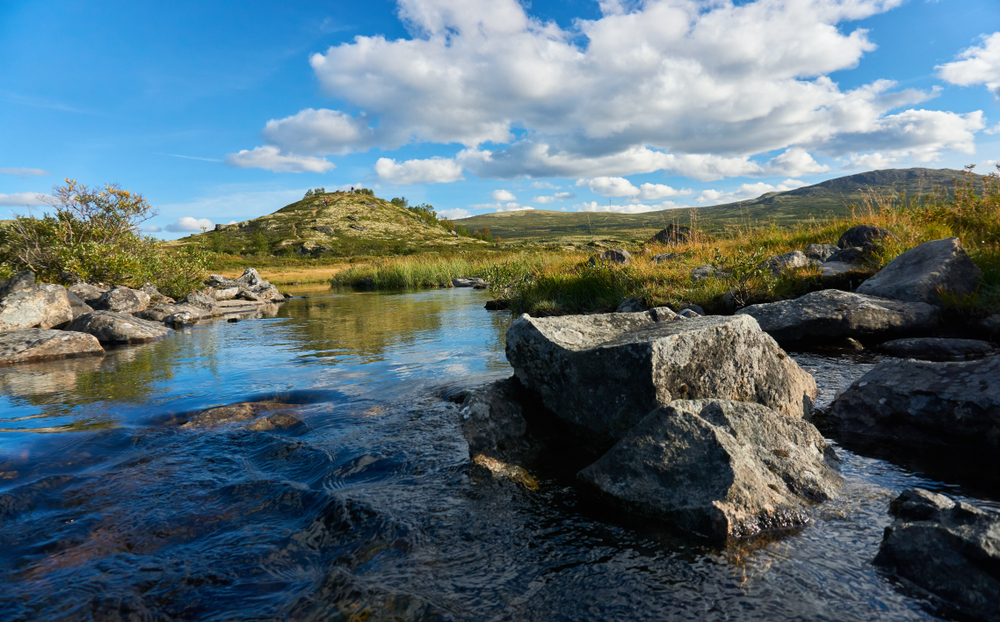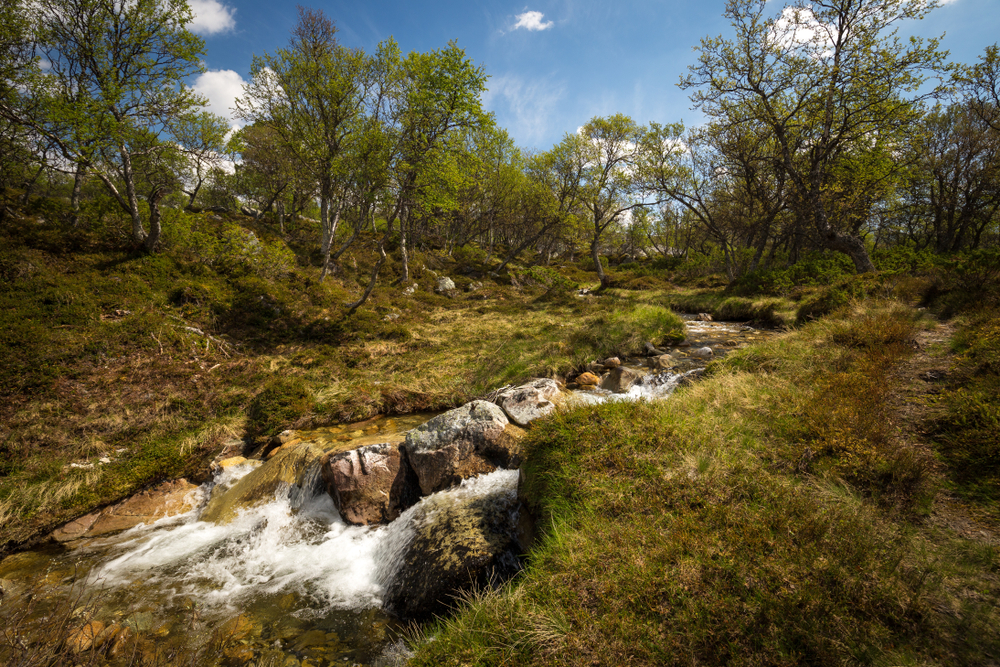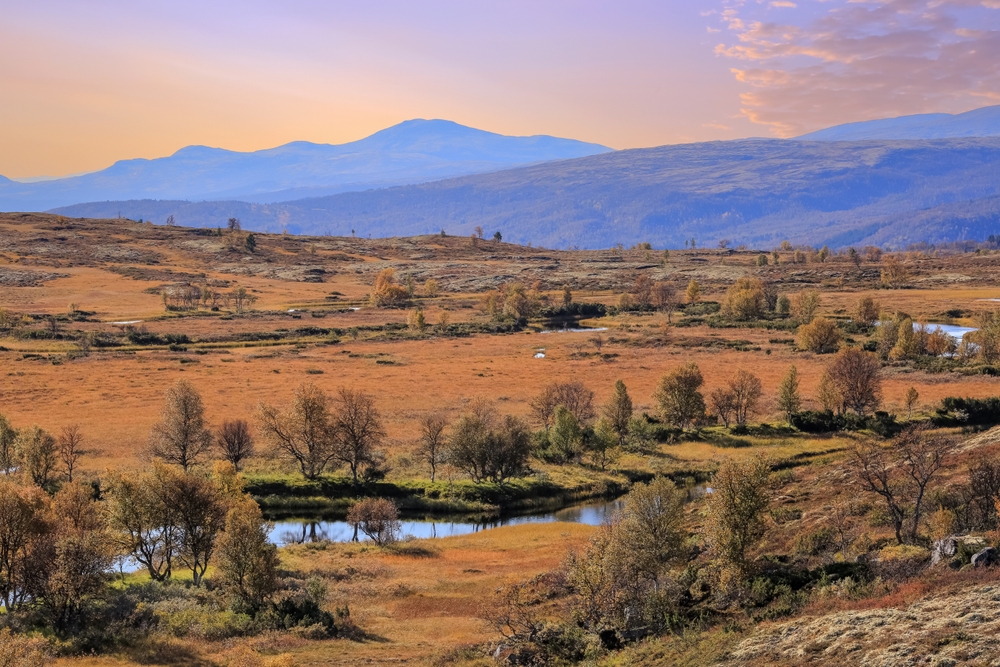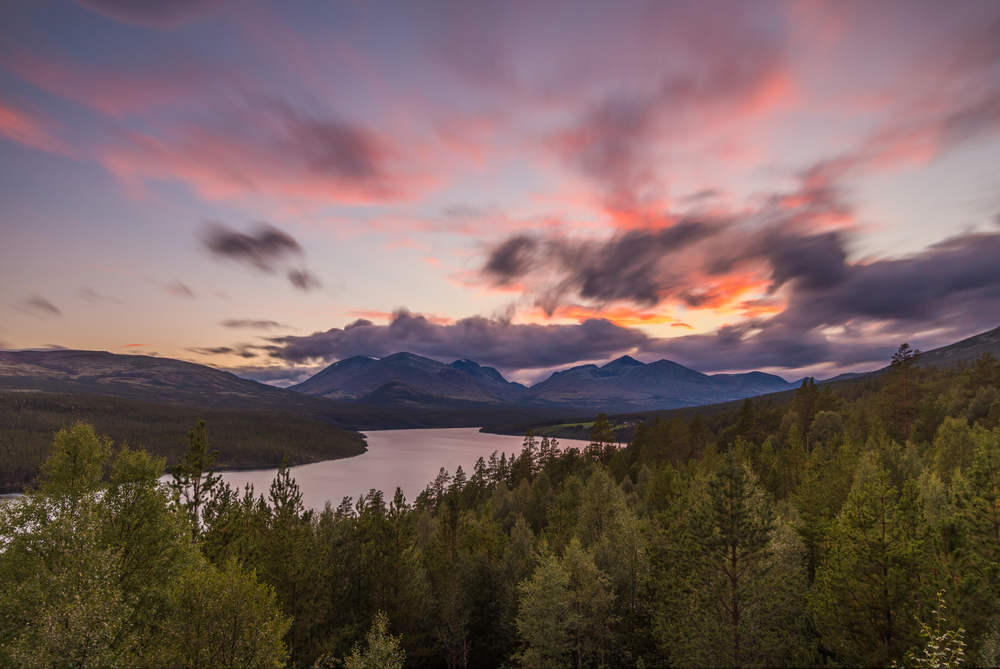Fulufjellet Overview
Fulufjellet National Park, known as Fulufjellet nasjonalpark in Norwegian, is a protected area located in Innlandet County, Norway, near the border with Sweden.
The park covers 82 square miles (213 square kilometers) and is an extension of Sweden’s Fulufjället National Park, creating a cross-border conservation area. Established in 2012, the park preserves a pristine alpine plateau with dramatic cliffs, waterfalls, and dense boreal forests, offering a rugged yet stunning landscape characterized by rolling mountains, deep valleys, and extensive wetlands.
The park’s terrain consists primarily of a high plateau with Fulufjellet Mountain as its dominant feature. The landscape is marked by expansive heathlands, old-growth coniferous forests, and peat bogs. The park’s most notable water feature is the Njupeskär Waterfall, located on the Swedish side but accessible from the Norwegian park.
At 410 feet (125 meters) high, it is Sweden’s tallest waterfall and a spectacular sight. The region is also home to many lakes, rivers, and wetlands that contribute to the area’s unique ecosystem.
Fulufjellet National Park is known for its rich biodiversity, with a variety of wildlife species adapted to the harsh Nordic climate. Among the mammals found here, visitors may encounter moose, red foxes, and lynx, while the elusive wolverine and even the occasional brown bear roam the remote sections of the park.
The park’s highlands and forests provide excellent habitats for birds, including golden eagles, Siberian jays, and the black-throated diver. The mix of wetlands and open tundra makes it an important nesting area for several species of migratory birds, especially during the summer months.
One of the most famous aspects of Fulufjellet National Park is the Old Tjikko, a Norway spruce located on the Swedish side of the Fulufjället plateau. Estimated to be over 9,560 years old, it is one of the oldest known trees in the world. Though outside the Norwegian section of the park, its presence highlights the ancient and undisturbed nature of the Fulufjellet region.
Visitors to Fulufjellet National Park can explore its pristine wilderness through hiking, cross-country skiing, and wildlife observation. The park features numerous marked trails, including routes leading to panoramic viewpoints over the Swedish border and the surrounding valleys. During winter, the area transforms into a snowy paradise, with excellent opportunities for skiing and snowshoeing.
Anglers can enjoy fishing in the park’s rivers and lakes, where trout and Arctic char thrive in the cold, clear waters. Unlike many other national parks in Norway, Fulufjellet does not have extensive infrastructure, making it an ideal destination for those seeking solitude and a true wilderness experience.
The conservation of Fulufjellet National Park focuses on preserving its fragile alpine and boreal ecosystems. Climate change poses challenges, especially in terms of changing precipitation patterns and potential impacts on the delicate wetland habitats.
However, the park benefits from Norway and Sweden’s collaborative management efforts, ensuring the protection of its unique landscapes and wildlife. By limiting human impact and maintaining strict conservation policies, the park continues to thrive as a haven for Nordic biodiversity.
















































































